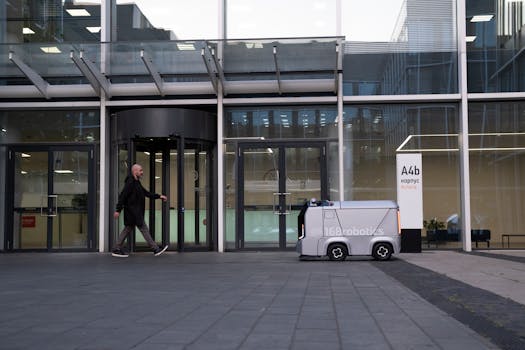Master Automated Logic for Smart Buildings: The Future of Efficiency
Unlock Smarter Operations: Your Guide to Automated Logic in Buildings
Ever feel like your building is a sleeping giant, full of potential but sluggish to respond? What if you could wake it up, making it incredibly efficient, responsive, and even predict its needs? That’s the power of automated logic. In this guide, we’ll unravel the mysteries of automated logic, exploring how it transforms ordinary structures into intelligent, dynamic environments. We’ll cover what it truly means, the core components that make it tick, and showcase real-world examples of its impact. Get ready to discover how to harness this powerful technology to create buildings that work smarter, not harder.
What Exactly is Automated Logic for Smart Buildings?
At its heart, automated logic is the brain behind the brawn of a smart building. Think of it as a set of sophisticated rules and decision-making processes that tell your building’s systems what to do and when to do it, all without human intervention. It’s about moving beyond simple timers and thermostats to create truly intelligent environments that adapt to changing conditions, occupancy, and even user preferences. This isn’t just about convenience; it’s about optimizing everything from energy consumption to occupant comfort and operational efficiency.

The relevance of automated logic is skyrocketing today. With increasing demands for sustainability, cost reduction, and enhanced user experiences, buildings are no longer static entities. They are complex ecosystems that need to be managed with precision. Automated logic provides that precision. It’s the unseen force that ensures lights turn off when a room is empty, HVAC systems adjust based on real-time weather data, and security protocols activate seamlessly. Understanding automated logic is key to unlocking the full potential of any modern building.
The Pillars of Automated Logic: Core Components and Their Magic
Automated logic isn’t a single entity but a combination of interconnected elements working in harmony. Let’s break down the key components that enable a building to think and act intelligently.
- Sensors: These are the eyes and ears of your building. They gather crucial data from the environment – think temperature, occupancy, light levels, air quality, and even motion. Without accurate sensor data, automated logic has nothing to work with.
- Controllers/Building Management Systems (BMS): This is the central nervous system. Controllers receive data from sensors and execute the predefined automated logic. A robust BMS is essential for managing complex building operations and implementing sophisticated decision trees.
- Actuators: These are the muscles. Actuators are devices that carry out the commands from the controllers. This could be a damper adjusting airflow, a light switch turning on, a window opener activating, or a security door locking.
- Connectivity (IoT): The Internet of Things (IoT) is the circulatory system, allowing all these components to communicate seamlessly. Reliable network infrastructure is paramount for real-time data exchange and efficient automated logic execution.
- Data Analytics and AI: The intelligence multiplier. Advanced automated logic often incorporates data analytics and artificial intelligence (AI) to learn from past performance, predict future needs, and continuously refine its decision-making processes. This allows for predictive maintenance and even more granular optimization.
The beauty of automated logic lies in its ability to create dynamic responses. Instead of a fixed schedule, the system can react to real-time conditions. For instance, if a room is suddenly occupied, automated logic can trigger the lights and adjust the temperature, all based on sensor input. This responsiveness is a game-changer for energy savings and occupant comfort.

The core benefit is optimizing resource allocation. Automated logic ensures that energy, water, and even human resources are used only when and where they are needed. This leads to significant cost reductions and a smaller environmental footprint.
Real-World Symphony: How Automated Logic Transforms Buildings
The theoretical concepts of automated logic come alive in practical applications. Let’s explore some compelling examples and case studies that showcase its transformative power.
Imagine an office building where automated logic orchestrates the entire HVAC system. During occupied hours, it maintains optimal temperatures based on real-time occupancy data from motion sensors and even individual desk sensors. When the building is empty, automated logic seamlessly reduces heating or cooling, significantly cutting energy costs. This isn’t science fiction; it’s a reality in many modern smart buildings.
In a retail environment, automated logic can adjust lighting levels based on natural daylight availability. As the sun sets, sensors detect the dimming light, and the automated logic gradually increases artificial lighting to maintain a consistent and inviting ambiance. This optimizes energy usage while enhancing the customer experience.
Consider a university campus. Automated logic can manage lighting and ventilation in lecture halls based on class schedules and real-time occupancy. If a class is canceled, the system automatically adjusts, preventing unnecessary energy consumption. Furthermore, automated logic can be integrated with security systems to manage access control and emergency protocols efficiently.

One compelling case study involved a large commercial office complex that implemented advanced automated logic for its lighting and HVAC systems. By integrating occupancy sensors, daylight harvesting, and predictive weather data into their BMS, they achieved a 30% reduction in energy consumption within the first year. The system learned occupancy patterns, adjusted setpoints dynamically, and ensured lights were never left on in unoccupied zones.
For a deeper understanding of how these systems are built and managed, exploring resources on Building Automation Systems (BAS) can be very insightful. You might find valuable information on the Commercial Buildings Information Hub.
Another practical application is in smart parking systems. Automated logic can guide drivers to available parking spots using sensors and digital signage, reducing congestion and wasted time. This not only improves the driver experience but also contributes to smoother traffic flow within a facility. We’ve also seen how smart building principles can be applied to residential settings in our Post Views: 37